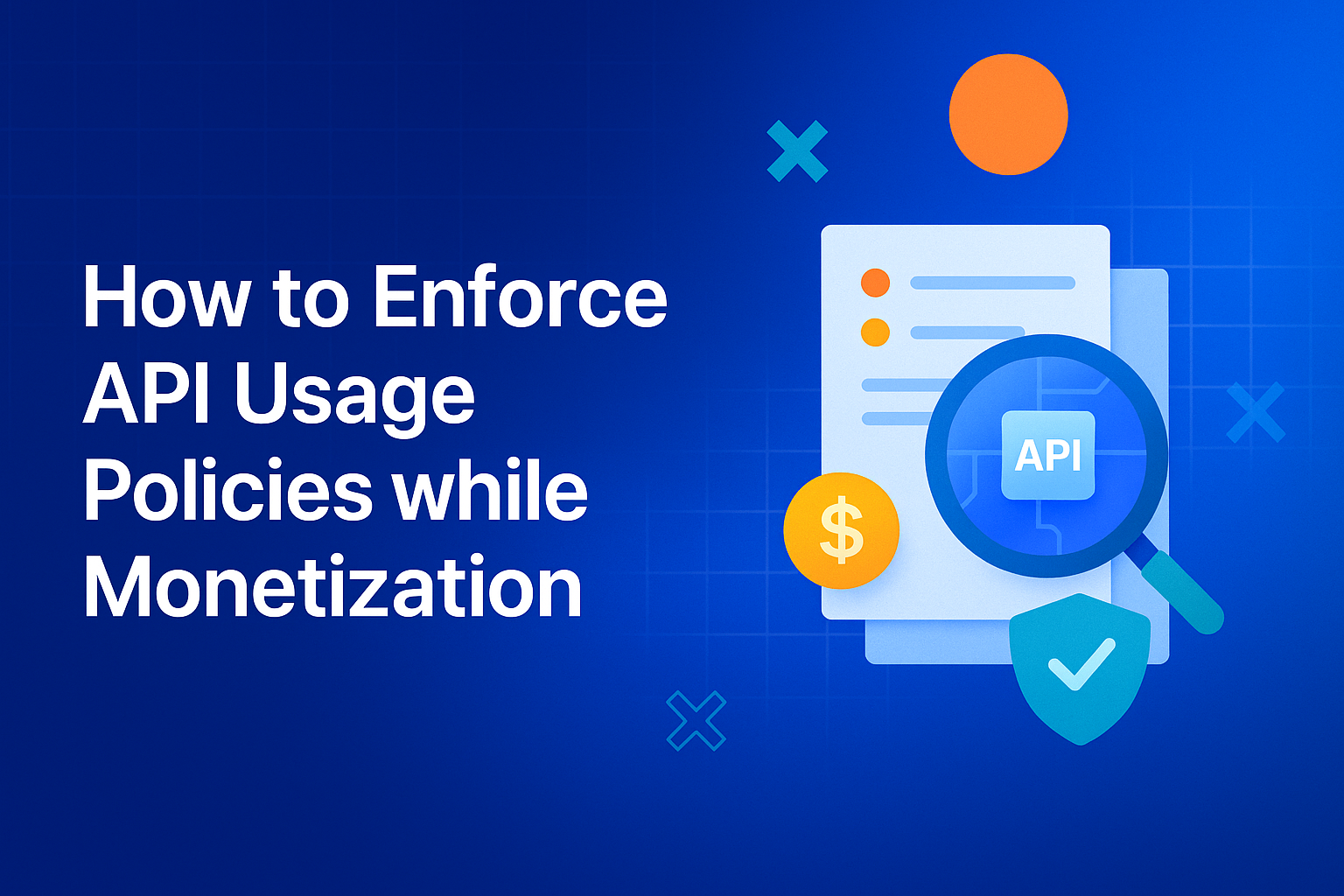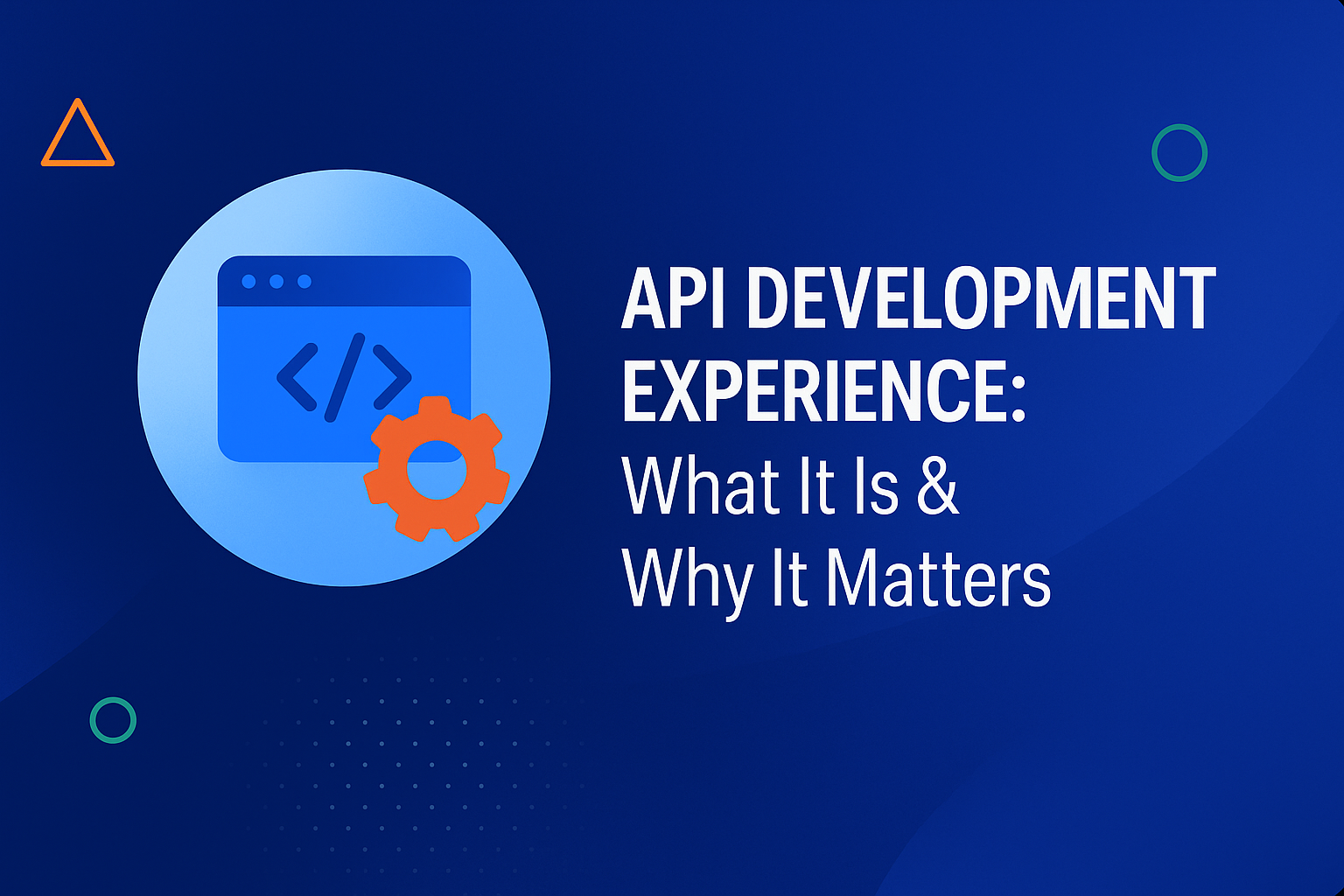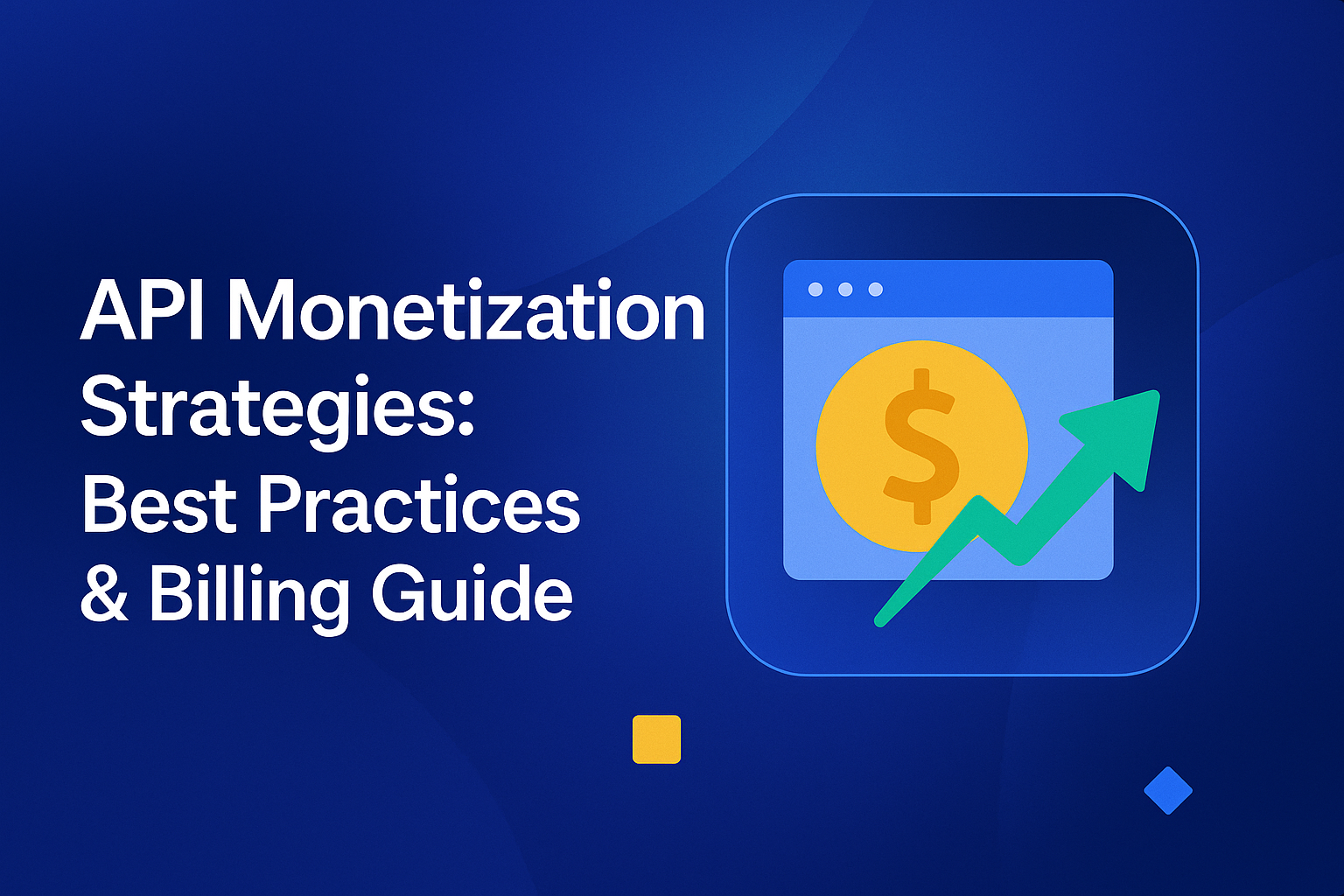
Monetising an API isn’t just about setting a price; it’s about enforcing the rules that make that price meaningful. Without well-defined usage policies, even the smartest pricing model collapses. Developers exceed quotas, systems get overloaded, and revenue leaks through untracked calls.
Enforcement is what connects business intent to technical control. It’s where API design meets governance, rate limits, quotas, entitlements, and throttling, all working together to ensure every API call aligns with its plan.
In this blog, we’ll break down how to enforce API usage policies for monetization, from structuring plans and quotas to implementing them, so you can turn access into a measurable, compliant, and scalable business asset.
What is an API usage policy?
An API usage policy defines the rules that govern how consumers can access and use your APIs. It sets clear boundaries on what’s allowed, such as how many requests can be made, how often, from which sources, and under what authentication or pricing plan. In essence, it’s the contract between your platform and its users that ensures fair, predictable, and secure consumption of your APIs.
These policies form the backbone of API monetization. They translate pricing models into enforceable technical limits through mechanisms like rate limiting, quotas, and entitlements. A free tier might cap calls at 1,000 per day, while a premium plan allows higher throughput and priority access. Beyond commercial control, usage policies also protect reliability, preventing spikes or misuse that could affect other users.
Principles for enforceable, customer-friendly policies
Enforcing API usage policies isn’t just about setting limits; it’s about maintaining trust and predictability. The goal is to protect performance and revenue without frustrating developers. Striking that balance requires policies that are transparent, consistent, and adaptable to real-world usage patterns.
1. Clarity over complexity
Ambiguous language like “reasonable use” breeds confusion and disputes. Define exact limits, requests per second, per day, or per billing cycle, and communicate them in documentation and headers. Clarity helps developers design efficiently and reduces support overhead.
2. Fail gracefully
When a consumer exceeds limits, the experience shouldn’t collapse. Return HTTP 429 Too Many Requests with retry hints or remaining quota headers. Graceful degradation protects uptime while signalling that enforcement is happening intelligently, not harshly.
3. Consistency across plans and endpoints
Apply consistent structures for rate limits, quota resets, and headers across plans. Developers should not need to relearn limits per endpoint. Consistency fosters confidence and simplifies SDK implementation.
4. Separation of concerns
Keep business logic (plans, pricing, entitlements) separate from enforcement logic (rate limiting, authentication). This modular approach allows independent scaling so finance teams can update plans without redeploying gateway policies.
5. Transparency in communication
Expose usage data through dashboards, Rate limit headers, and near-threshold alerts. When developers can track consumption in real time, they’re more likely to upgrade plans proactively instead of facing service interruptions.
6. Progressive enforcement
Don’t block immediately on overuse. Start with soft throttles, warnings, or temporary slowdowns. Only escalate to hard limits for sustained or abusive behaviour. Progressive enforcement preserves developer goodwill and business continuity.
7. Alignment with business goals
Every limit should map to a measurable business outcome, stability, revenue protection, or tier differentiation. Enforcing for the sake of control often backfires; enforcing for fairness sustains both profitability and user satisfaction.
The enforcement toolbox for API usage policies
Enforcing API usage isn’t a one-size-fits-all exercise, it’s a toolkit of mechanisms working in harmony. Quotas ensure fair allocation over time, rate limits manage bursts in real time, throttling smooths sudden spikes, and feature gates define who gets access to what. Together, they form the operational backbone of API monetization, translating pricing plans and entitlements into real-world control without compromising developer experience or system stability.
Quotas (billing periods & plan entitlements)
Quotas cap total consumption over a time window (day, month, quarter) and are the backbone of monetised plans. They answer, “How much can I use this billing period?” Typical units include requests, records, GB transferred, compute seconds, or even business operations (e.g., “invoice.create”). A free plan might include 100k requests/month, Pro 5M/month, and Enterprise custom, with separate quotas for costly endpoints like bulk exports.
Quotas tie directly to plan entitlements. When a key is issued or a token minted, you attach entitlements such as requests_monthly=5_000_000, bulk_export=disabled, webhooks=10k/day. At runtime, a counter increments; when the counter reaches the allowance, enforcement kicks in. Many teams enable overage (bill-per-extra-unit) to preserve continuity, but require explicit opt-in to avoid bill shock.
Rate limits (real-time fairness and protection)
Rate limits govern throughput in short windows, per second/minute, to protect latency and fairness. Use algorithms like token bucket (allows bursts up to a capacity, then refills at a steady rate) or sliding window (smoother averages). Example: Free 10 req/s burst to 20, Pro 100 req/s burst 200, Enterprise 1,000 req/s with higher burst. Apply per API key/client ID first; add per-IP limits at the edge to deter abuse.
Good rate limits are predictable and well-signalled. Return 429 Too Many Requests with Retry-After and include standard usage headers (e.g., RateLimit-Limit, RateLimit-Remaining, RateLimit-Reset). Keep limits consistent across endpoints unless there’s a cost asymmetry (search vs. write). For highly sensitive operations—payments, mutations, add specialised limiters (e.g., “one idempotency key per second per account”) and concurrency caps to prevent thundering herds.
Throttling vs blocking vs shaping
Throttling slows requests instead of rejecting them, introducing server-side delays when a client exceeds its budget. This “soft brake” protects backends under brief surges without creating error storms on the client side. Use it for paid tiers where you want to preserve success rates while nudging clients to back off. Pair with headers that explain the delay so SDKs can adapt.
Blocking is a hard deny (429/403) used when the policy must be absolute, e.g., quota exhausted with no overage, clear abuse, or ToS violations. Blocks should be actionable: include messages like “Monthly quota reached—resets on 01 Nov 00:00 UTC. Enable overage or upgrade.” Reserve immediate, indefinite blocks for security incidents; otherwise, consider a cool-off window or temporary reduction.
Traffic shaping steers calls into differentiated experiences: priority queues for Enterprise, lower timeouts for Free, fair-share schedulers to prevent noisy neighbours, and burst credits that accrue over time. For example, Enterprise requests can bypass generic rate limits via a priority lane with its own budget, while Free traffic is shaped to protect P99 latency for paying customers. Shaping is powerful for monetization because it adds tangible value to higher tiers without changing business logic.
Feature gates & scoped access
Not every endpoint should be available to every plan. Feature gates toggle access to high-cost or premium capabilities (bulk export, real-time webhooks, advanced filters, historical data). They’re enforced via scopes/claims on tokens or via API key attributes checked at the gateway. Example: Free can call /search basic fields; Pro unlocks /search?include=analytics, and Enterprise unlocks /bulk/export and /realtime/stream.
Design gates to be discoverable and upgradable. Document which scopes unlock which endpoints, and return clear 403 messages: “Endpoint requires scope bulk_export—upgrade to Pro+.” For data-heavy products, gate by data freshness (e.g., Free = 24-hour delay, Pro = 1-hour, Enterprise = real-time) or result size (row/field caps). For AI/ML APIs, gate model families or context window sizes.
Finally, propagate feature activation to all layers: docs → SDKs → portal → billing → enforcement. A common failure mode is “entitlements drift” where billing says a user has Pro, but the token lacks the corresponding scopes. Prevent this by centralising entitlements, issuing short-lived tokens with fresh claims, and validating on every request. Feature gating, when cleanly implemented, becomes a sellable lever that scales revenue without overcomplicating rate/quota math.
Where to enforce (arch patterns)
Enforcement only works when applied at the right layer of your architecture. Each layer, from gateway to analytics, plays a distinct role in controlling usage and protecting business logic. A well-designed enforcement pattern distributes responsibility intelligently rather than relying on a single choke point.
- At the API gateway: The first line of defence. Gateways handle rate limits, burst control, and authentication at wire speed before traffic hits your backend. Policies like spike arrest or rate limiting prevent overloads and protect upstream systems.
- In the monetization engine: This layer verifies entitlements and quotas tied to billing plans. For example, DigitalAPI monetization limits check ensures a user’s balance or plan hasn’t expired before forwarding a request. It connects business rules directly with runtime enforcement.
- Within the application layer: Use for fine-grained logic such as user-specific caps, endpoint-level feature flags, or data-volume-based limits. Ideal when costs vary by operation (e.g., per-transaction billing in fintech APIs).
- In the analytics and governance layer: This layer observes, reports, and automates follow-up actions. It detects anomalies, triggers quota alerts, or temporarily suspends misuse. Coupled with dashboards, it enables transparency for developers and operations teams alike.
- At the partner or plugin layer: DigitalAPI’s unified developer portal let teams enforce limits across multiple gateways. These layers provide cross-gateway consistency, crucial for large enterprises managing mixed environments.
Communicating limits to developers (DX that prevents tickets)
Clear communication of limits is the difference between a seamless developer experience and a flood of support tickets. Developers shouldn’t have to guess when they’re nearing a quota or why a request was denied. Every limit, whether quota-based or rate-based, should be visible, predictable, and self-explanatory.
Start by publishing all usage rules in your documentation and SDKs, including rate limits, reset intervals, and quota units. Then reinforce this transparency through standard headers such as RateLimit-Limit, RateLimit-Remaining, and RateLimit-Reset, along with Retry-After in 429 responses. This allows developers to programmatically handle throttling without confusion.
Go beyond reactive communication: send pre-emptive notifications at 80% or 95% of quota via email, webhook, or portal alerts. Within your developer portal, display live consumption dashboards and upgrade options. When policies are communicated proactively and consistently, enforcement feels like a product feature, not a restriction.
Common pitfalls and how to avoid them
Even the best monetization strategy can fail if enforcement isn’t implemented thoughtfully. Common mistakes often stem from poor communication, misaligned systems, or overly rigid limits that frustrate developers. Avoiding these pitfalls ensures that enforcement strengthens trust instead of damaging it.
- Silent throttling: Blocking or delaying requests without clear feedback leaves developers guessing. Always return standard headers and meaningful error messages so clients can adapt gracefully and avoid unnecessary retries.
- Entitlement drift: When billing, identity, and gateway systems fall out of sync, users experience incorrect limits or access denials. Maintain a single source of truth for entitlements and automate synchronisation across systems.
- Overly harsh enforcement: Immediate blocking on small overages can disrupt production workloads. Implement soft thresholds, Grace periods, or temporary throttling before a full stop to preserve goodwill.
- Inconsistent units and plans: Mixing metrics (Requests, data volume, time) across tiers confuses both developers and billing systems. Keep measurement units consistent within a plan and clearly documented in API references.
- Lack of real-time visibility: Without dashboards or usage alerts, developers discover breaches too late. Provide real-time visibility through developer portals, APIs, or analytics dashboards to Foster transparency and trust.
- Manual or static policy updates: Hard-coding rate limits and quotas into gateway configs makes change management painful. Use centralised, API-driven configuration (Via governance layer or policy templates) so limits can evolve with pricing plans seamlessly.
- Ignoring analytics feedback loops: Many teams set limits once and never review how users actually behave. Continuously analyse usage patterns to recalibrate thresholds, discover hidden demand, and prevent false positives from bursty traffic.
- Policy fragmentation across gateways: Multi-gateway environments often have inconsistent enforcement logic, Helix vs Apigee vs Kong vs AWS gateway. Establish a unified governance or control plane (like DigitalAPI) to synchronise policy definitions and avoid plan mismatches.
How DigitalAPI enables easy usage management and enables API monetization?
DigitalAPI simplifies API usage management by unifying enforcement, visibility, and monetization across multiple gateways. Instead of configuring rate limits or quotas separately in Apigee, Kong, or AWS Gateway, teams can define them once within DigitalAPI’s Helix control plane, ensuring consistent policies enterprise-wide.
Every API call is automatically tracked against plan entitlements, requests, data volume, or transaction count, enabling precise billing and real-time governance. Usage metrics feed directly into the analytics layer, helping teams identify high-value consumers, detect anomalies, and trigger upgrade prompts.
With built-in monetization features like tiered plans, overage handling, and usage-based billing, DigitalAPI turns access control into a growth lever. It ensures every call is accounted for, every plan is enforced, and every API becomes a measurable business asset.
So, what are you waiting for? Book a demo to get started!
You’ve spent years battling your API problem. Give us 60 minutes to show you the solution.
.svg)







